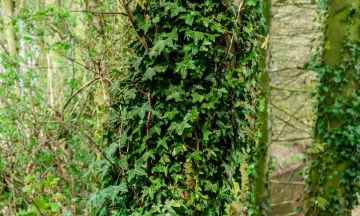
Programa de Eliminación de Plantas Invasoras
En 2008, la División de Arroyos puso en marcha el Programa de Eliminación de Plantas Invasoras. El objetivo principal de este programa es eliminar las plantas invasoras no autóctonas de los arroyos de la ciudad para restaurar los ecosistemas ribereños. En general, las plantas invasoras tienen la capacidad de afectar negativamente a las especies autóctonas (tanto plantas como animales) y causar una degradación significativa de los procesos del ecosistema.
La División de Arroyos ha estado trabajando durante los últimos años para eliminar una planta invasora conocida como Arundo donax, o caña gigante, de las cuencas de los arroyos Arroyo Burro, Mission y Sycamore. Arundo es una planta de crecimiento rápido que desplaza a las plantas autóctonas y reduce el valor del hábitat para la fauna. Además, sus densos rodales suponen un peligro de incendio e inundación. Como parte de este programa, el personal de Creeks ha llevado a cabo actividades de divulgación dirigidas a los propietarios, ha coordinado su labor con el Distrito de Control de Inundaciones del Condado de Santa Bárbara y la Oficina del Comisario de Agricultura, ha solicitado subvenciones y permisos y ha elaborado planes de eliminación y revegetación. Se han eliminado juncos gigantes en Sycamore Creek, Mission Creek y Arroyo Burro. También se retiró carrizo gigante del Refugio de Aves en coordinación con el zoológico de Santa Bárbara, Channel Islands Restoration y el Proyecto de Recuperación de Humedales del Sur de California. Para garantizar la erradicación completa del carrizo gigante, es necesario realizar un seguimiento y un retroceso continuos del carrizo gigante en todos los lugares donde se ha eliminado.
Si tiene carrizo gigante en su propiedad y está interesado en que lo retiremos, póngase en contacto con nosotros por correo electrónico en Creeks@SantaBarbaraCA.gov.







